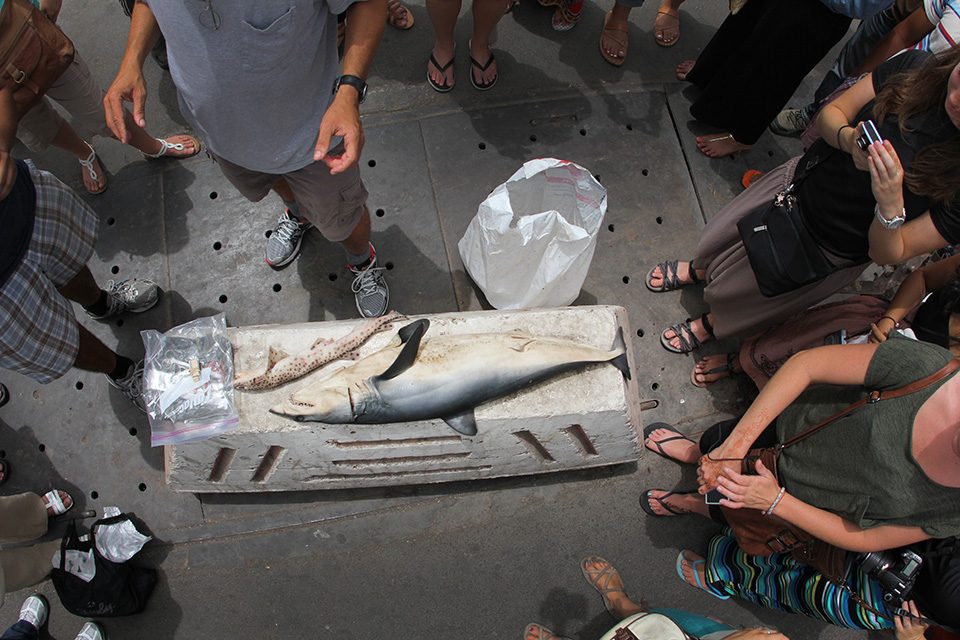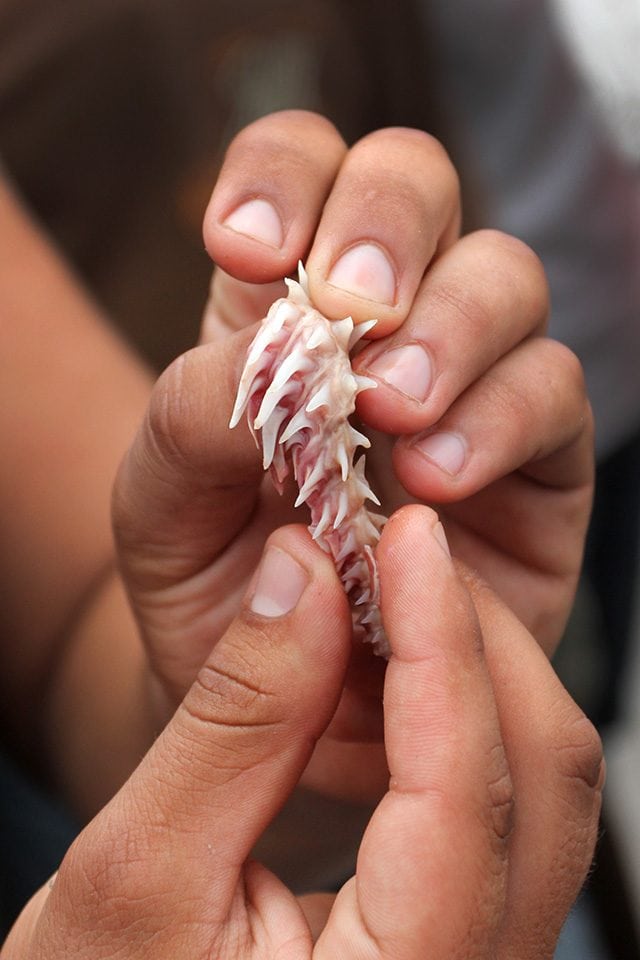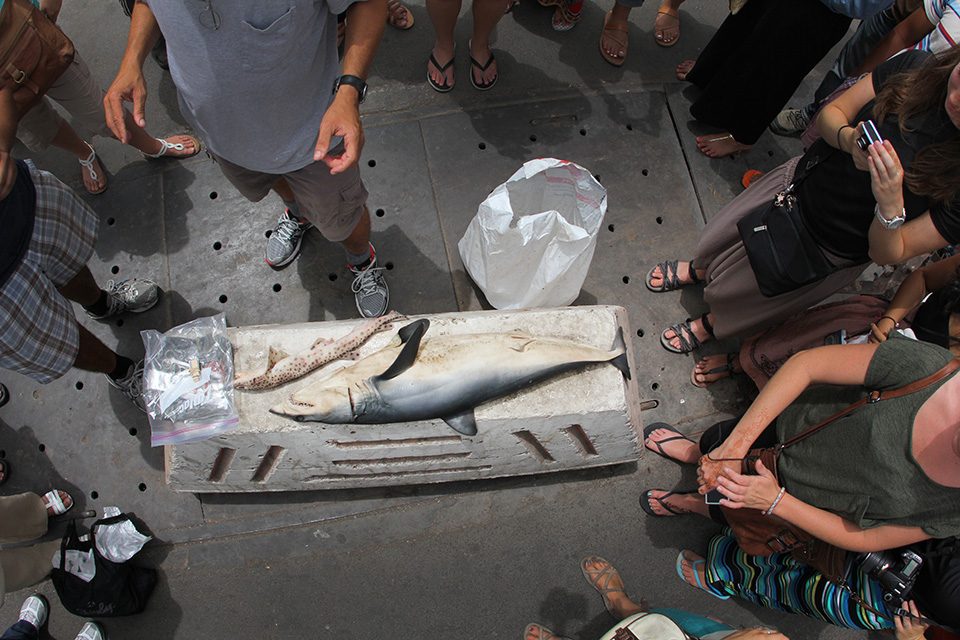Professor Dan Abel teaches Marine Science at Coastal Carolina University. On the MV Explorer he’s known as The Shark Guy. His enthusiasm for marine life is infectious. During the ship’s first day in Casablanca, Morocco Abel stumbled across the local fish market where he saw several species of sharks. He immediately emailed the class to meet on the last day in port for an exploration of the market and shark dissection. What ensued was an electric combination of biology, teaching, learning, smelling, and street performance.
*Note: the shark used in this dissection was too old to eat (in fact the market director didn’t want us to take it in fear we might get sick). The best possible use of this shark was for education, rather than going straight to the trash.














